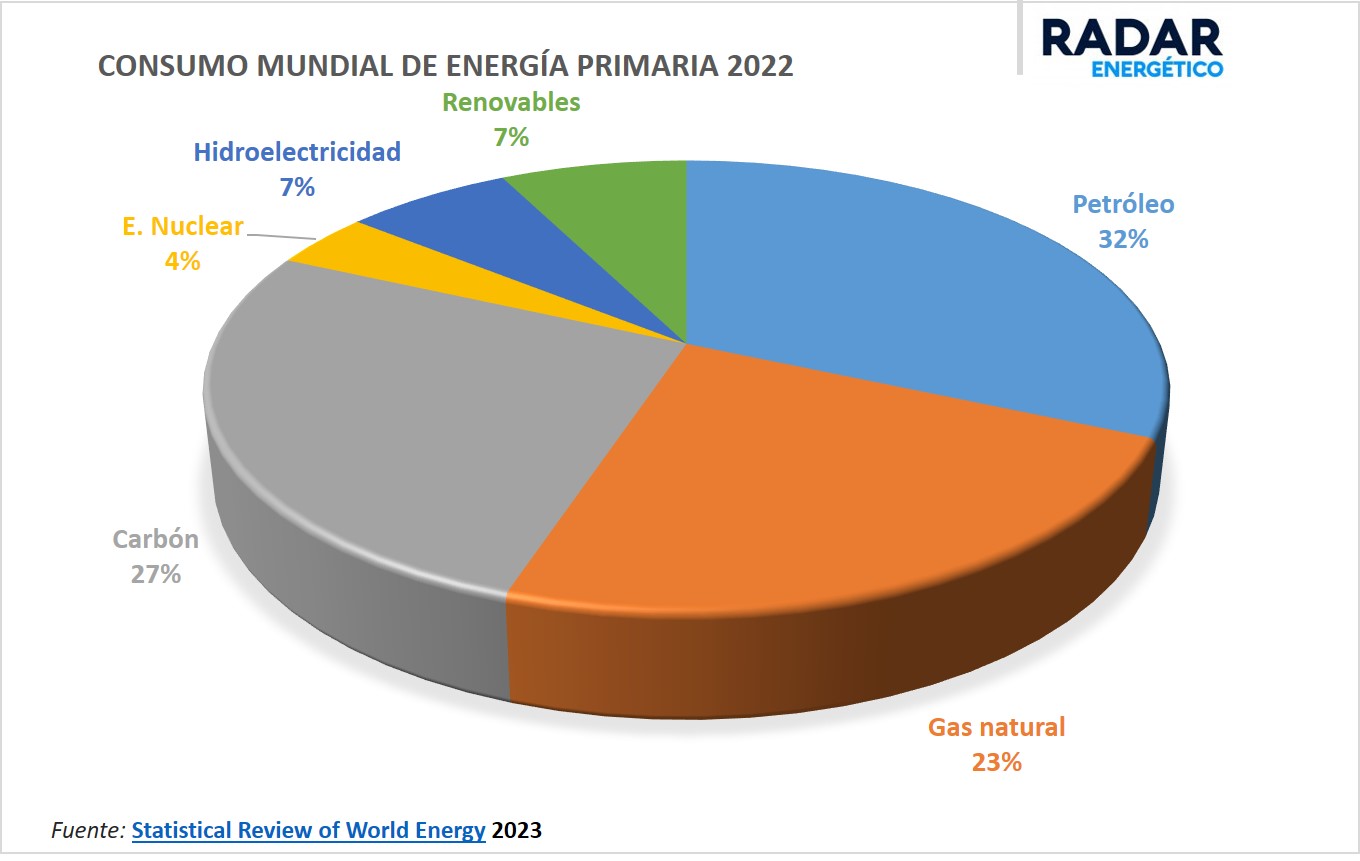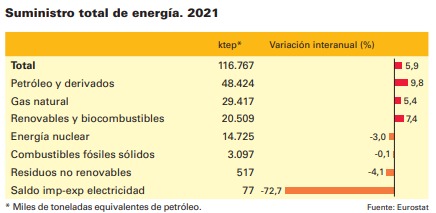Natural gas
-
What is it?
-
What is it made of?
-
Where does it come from?
-
What is it used for?
-
How is it measured?
-
Gas sector
-
Transition energy
-
Efficient energy
-
Versatile energy
As its name implies, natural gas is a mixture of hydrocarbon gases that are naturally present in deep reservoirs undemeath the earth. It is a colourless and odourless substance and is formed primarily of methane (approximately 90%).
It emits lower levels of carbon dioxide than other fossil fuels, such as coal, oil and their derivatives, which is why it is considered a transition fuel towards a decarbonized future.
Natural gas produces more energy per unit volume than other fossil fuels.
Natural gas is versatile due to its numerous uses that enhance the quality of our lives, both at home and in industry.
It is used, for example, for heating, cooling or electrical generation, as well as for the production of hydrogen, an energy vector destined to satisfy in the future the energy needs of sectors that are difficult to abate and that, due to their specific energy requirements, can’t be electrify.
The chief component of natural gas is methane, making up approximately 90%.
The molecular structure of methane has one carbon atom and four hydrogen atoms (referred to as CH4), so that its combustion generates between 45% and 70% less CO₂ than any other fossil fuel. The absence of sulphur, heavy hydrocarbons and other impurities in its composition makes it much more environmentally-friendly.

Natural gas is found in deep deposits below the earth’s surface , trapped in sediment, mud and other debris and is formed from the decomposition of organic matter, such as the remains of a plant or animal.
Current estimates place global natural gas reserves (2023) at 187,000 million cubic meters (according to OECD/IEA), enough to supply the entire world for at least 65 more years.
On the other hand, as more drilling is performed and more sophisticated technologies are developed, a larger number of gas fields are being discovered (Turkmenistan, 52bcm in 2022) which is turning natural gas into a dominant source of energy.

The main reserves of natural gas in the world are found in the Middle East and Eastern Europe, mainly Russia, but there are also significant quantities in other areas.
Historically, Spain’s main supplier has been Algeria, however, in recent years other countries such as the US or Russia have become important for the Spanish market.
Other suppliers are Norway, Egypt, Qatar and Trinidad & Tobago. Only 1% of the natural gas consumed in Spain is of national origin.
Natural gas consumption started to increase dramatically in the second half of the 20th century and is now poised to become one of the leading forms of energy in the 21st century, with demand increasing each year. Not only is it clean, dependable and affordable, but it has multiple uses across residential, commercial and industrial sectors.
- Residential sector: Cooking, hot water, heating and air conditioning.
- Industrial sector: Cogeneration, steam production, fuel for industrial boilers, waste treatment and incineration, metals preheating (particularly for iron and steel), drying and dehumidification.
- Electricity generation: Combined heat and power (CHP) plants.
Being:
- Consumption in m³: quantity of natural gas expressed in volume.
- Conversion coefficient: represents the heating value of the gas, being 11.6 kWh/m³ by agreement.
- Condition figure: factor related to environmental conditions.
The transport capacity of the MEDGAZ gas pipeline is 10.16bcm/year, where 1 bcm = 1,000 million (1 billion cubic meters).
-
World Outlook
-
EU Outlook
-
Spain's Outlook
Consumption
The global demand for natural gas is primarily being driven by the increase in its use for electricity production.
Following a 4.8% increase in 2021, gas consumption decreased by 1.4% in 2022, marking its first decline since 2009, due to reduced demand in the EU, Russia, Brazil, and China.
In Europe, gas consumption fell by 12%, driven by concerns about potential supply interruptions following the Russian invasion of Ukraine.


Production
After its rebound in 2021 (+4.3%), global gas production remained stable in 2022, amid lower gas demand and the offset of Russia’s production decline by increased production in North America, the Middle East, China, and Australia.
Links of interest: CNE.ES / BP.COM / SEDIGAS.ES / ENERDATA.ES
Connsumption
Throughout the 21st century, European demand for natural gas has remained consistently above 500 billion cubic meters annually. Within the European Union, there is an increasing reliance on this hydrocarbon for electricity generation. It currently holds a share of 31% among the energy sources used for electricity and heating production.
Source: www.consilium.europa.eu, 2022


Production and Supply
Since the Ukraine war, the landscape of imported gas in Europe has changed. Currently, the United States is the largest supplier (29.6%), surpassing Russia (24.4%) and Algeria (21.6%).
MEDGAZ is qualified by the European Commission as a “Project of Common Interest within the trans-European networks in the energy sector”.
Source: La Razón, 2022
Links of interest: CNE.ES / BP.COM / SEDIGAS.SE

Consumption
The Spanish demand for natural gas is experiencing a strong and sustained increase. In 2021, the consumption of this hydrocarbon grew by 5.4% compared to the previous year. This growth is attributed to the use of natural gas for electricity generation, as part of the commitment to cleaner energy. Since the early 21st century, natural gas has solidified its position as the second most demanded primary energy source in Spain.
Source: Eurostat
Production and supply
Spain has extremely limited natural gas reserves, depending almost renting almost entirely on imports.
Its main supplier is Algeria, although this dependence is starting to wane as supply points become more diversified.
Other countries that supply Spain include Nigeria, Egypt and Libya.
Source: Ministerio de Industria y Turismo

Links of interest: CNE.ES / BP.COM / SEDIGAS.SE
